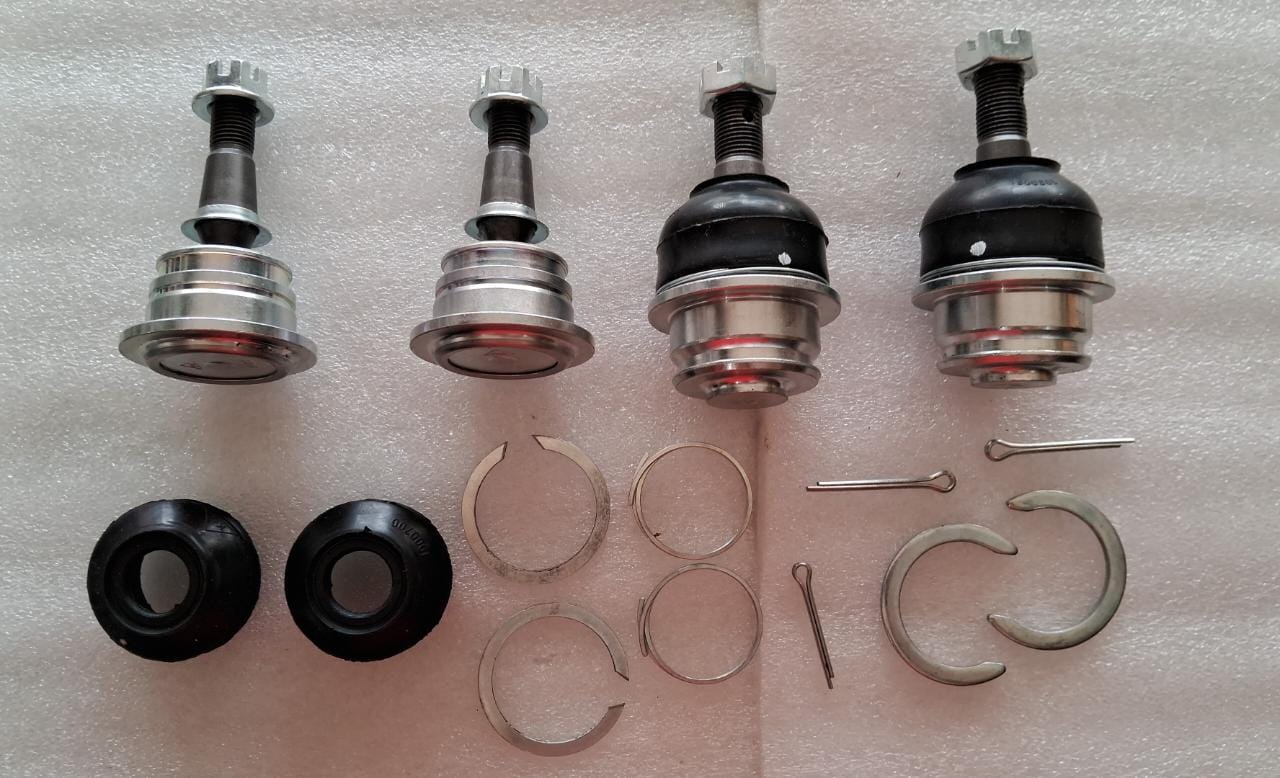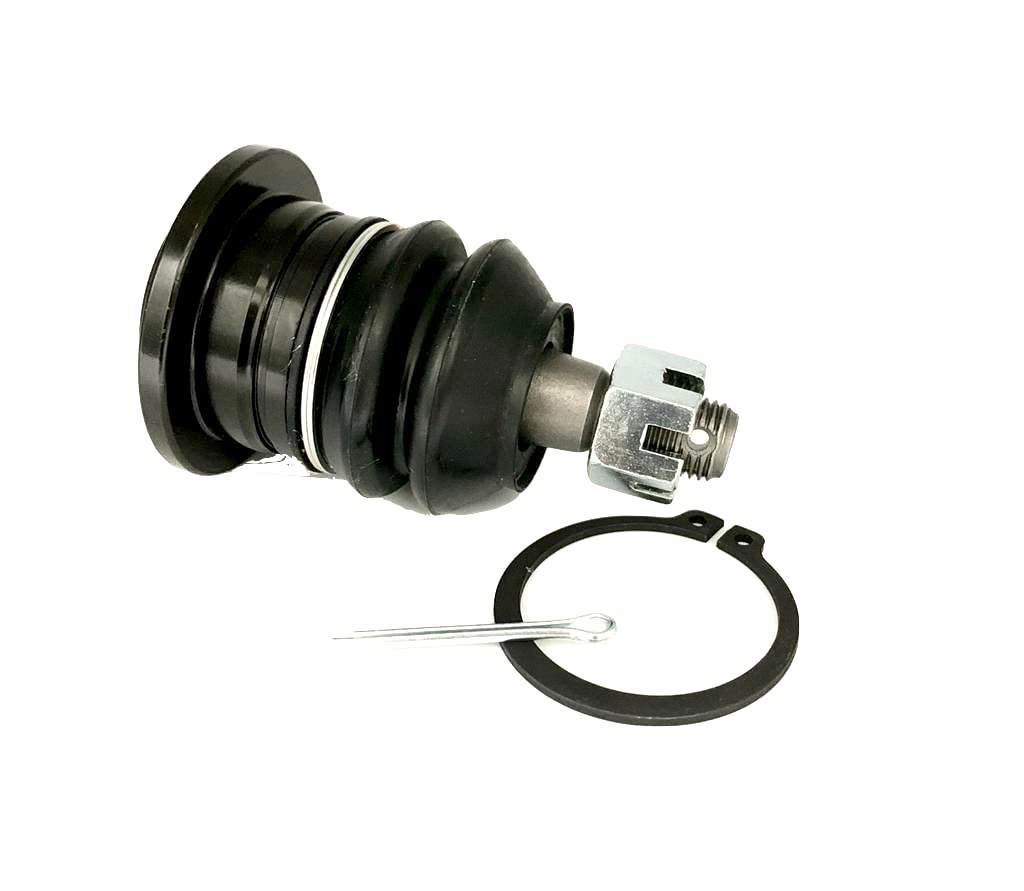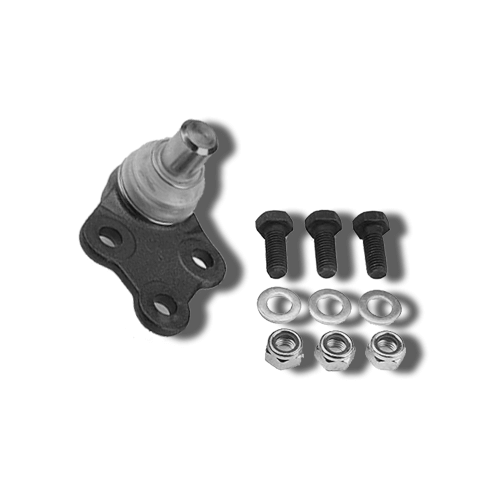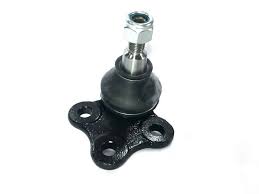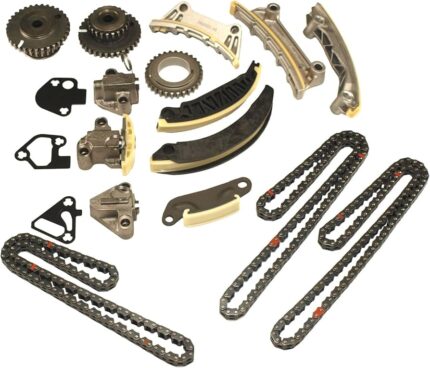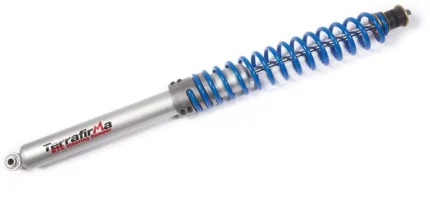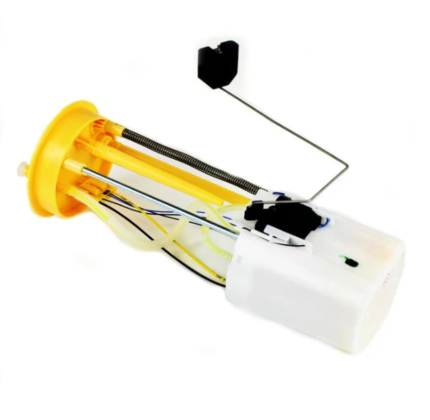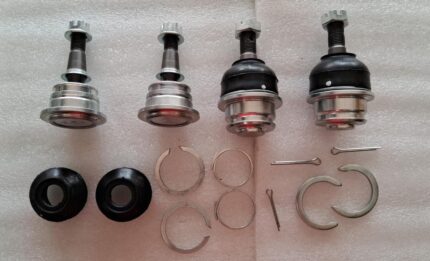Description
Get Front Lower Ball Joint Assy Toyota Fortuner KUN51 43330-09510
A ball joint assembly is a critical component in a vehicle’s suspension system. It allows the wheels to move in multiple directions and ensures a smooth and controlled ride. This assembly typically consists of a spherical bearing enclosed in a socket, providing a pivot point between the wheel and the vehicle’s suspension. Here is an in-depth look at the various aspects of a ball joint assembly.
Components of a Ball Joint Assembly
- Ball Stud: The ball stud is the core component of the ball joint. It features a spherical head that fits into the socket. The stud is usually made of hardened steel to withstand the stress and forces exerted during driving.
- Socket: The socket encloses the ball stud’s spherical head. It is often made of high-strength metal or a composite material. The interior of the socket is typically lined with a polymer or a bearing to reduce friction and wear.
- Boot: A rubber or polyurethane boot covers the joint, protecting it from dirt, debris, and moisture. This boot is crucial for maintaining the longevity of the ball joint by keeping contaminants out.
- Housing: The housing encases the entire assembly, providing structural support and mounting points for the suspension components.
- Lubrication: Many ball joints are designed with grease fittings, allowing for periodic lubrication. Proper lubrication reduces friction and wear, extending the life of the joint.
Types of Ball Joints
- Load-Carrying Ball Joints: These ball joints support the weight of the vehicle and are typically found on the lower control arm. They bear the brunt of the forces during acceleration, braking, and cornering.
- Follower Ball Joints: These do not carry the vehicle’s weight but are essential for maintaining proper alignment and steering precision. They are usually located on the upper control arm.
Functions of a Ball Joint Assembly
Pivot Point for Suspension Movement
-
-
- Vertical Movement: The primary function of the ball joint is to act as a pivot point that allows the suspension to move vertically. This movement enables the wheels to move up and down in response to road irregularities, such as bumps and potholes. By permitting this vertical movement, the ball joint helps maintain consistent tire contact with the road, which is essential for traction, stability, and handling.
- Flexibility in Suspension Articulation: The ball joint’s spherical design allows it to accommodate a range of suspension articulations, including compression and extension of the suspension system. This flexibility ensures that the vehicle can adapt to different driving conditions, maintaining a smooth and controlled ride.
- Steering Mechanism Facilitation
- Lateral Movement: In addition to vertical movement, the ball joint allows for lateral movement, which is crucial for steering. It provides the necessary pivot point for the wheels to turn left and right, enabling the driver to steer the vehicle effectively. This lateral movement is integral to the vehicle’s ability to navigate turns and corners with precision and control.
- Maintaining Alignment: The ball joint helps maintain proper wheel alignment during steering. Proper alignment ensures that the wheels are pointing in the correct direction, reducing tire wear and improving handling performance. Misaligned wheels can lead to uneven tire wear and compromised steering control, highlighting the importance of well-functioning ball joints.
- Load Bearing and Support
- Load Distribution: In load-carrying ball joints, such as those found on the lower control arm, the ball joint bears a significant portion of the vehicle’s weight. It distributes the load from the vehicle’s body to the wheels, ensuring that the suspension components can effectively manage the forces generated during driving, such as acceleration, braking, and cornering.
- Supporting Suspension Components: The ball joint also supports other suspension components, such as control arms and struts. By providing a stable pivot point, it allows these components to move freely and perform their functions effectively, contributing to the overall stability and performance of the suspension system.
- Absorbing and Dampening Shocks
- Shock Absorption: The ball joint plays a role in absorbing and dampening shocks from the road. As the vehicle encounters bumps and irregularities, the ball joint allows the suspension to move and absorb these impacts, reducing the transfer of vibrations and shocks to the vehicle’s body and passengers. This function is essential for maintaining a comfortable ride quality.
- Reducing Noise and Vibration: By facilitating smooth and controlled movement of the suspension, the ball joint helps reduce noise and vibration generated by road conditions. This reduction in noise and vibration enhances the overall driving experience, contributing to a quieter and more comfortable ride.
- Maintaining Stability and Control
- Vehicle Stability: A well-functioning ball joint is critical for maintaining vehicle stability. It ensures that the wheels remain in proper alignment and contact with the road, preventing issues such as wheel wobble or loss of control. Stability is particularly important during high-speed driving, cornering, and emergency maneuvers.
- Handling and Performance: The ball joint’s ability to facilitate smooth and precise movement of the suspension and steering systems directly impacts the vehicle’s handling and performance. It allows for responsive steering, predictable handling, and improved overall driving dynamics.
- Enhanced Safety
- Predictable Steering Response: By enabling accurate and consistent steering response, the ball joint enhances vehicle safety. It allows the driver to maintain control of the vehicle under various driving conditions, reducing the risk of accidents caused by poor steering performance or unexpected handling issues.
- Preventing Component Failure: A well-maintained ball joint helps prevent premature wear and failure of other suspension and steering components. By ensuring that these components can move and function as intended, the ball joint contributes to the overall reliability and safety of the vehicle.
-
Maintenance and Replacement
- Inspection: Regular inspection of ball joints is crucial for vehicle safety. Signs of wear include excessive play, clunking noises, uneven tire wear, and poor handling. Mechanics often use a pry bar to check for movement in the joint.
- Lubrication: For ball joints with grease fittings, periodic lubrication is necessary. Using the appropriate grease and following the manufacturer’s recommendations can significantly extend the joint’s lifespan.
- Replacement: When a ball joint shows signs of significant wear or failure, it must be replaced. Replacement involves removing the old joint and installing a new one, which may require special tools and alignment adjustments.

